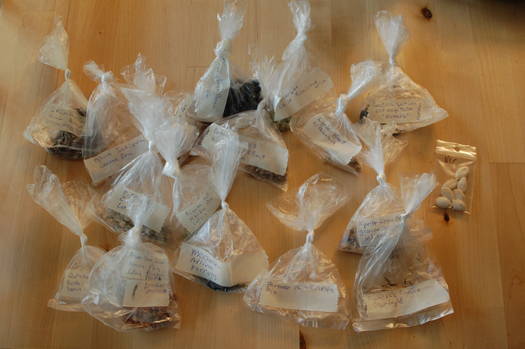I’ve touched on this briefly in the past, but I thought I would go into this a bit more, because it is really an important issue for people who save their own seeds.
There are three main kinds of plants: inbreeding, out breeding and plants that do both.
Inbreeding plants are by far the easiest to save seeds from, because they self pollinate and you don’t need to worry about cross pollination issues. These plants have also generally evolved to avoid inbreeding depression. Examples of plants that fall into this category are tomatoes, peas and grains.
Out breeding plants are a slightly different story. Out breeding plants cross pollinate, and you must consider this when saving seeds. Often the easiest way to prevent cross pollination is to grow only one type of a particular plant species. Examples of out breeding plants are corn and cabbage related plants. With out breeding plants, you also need to be careful to avoid inbreeding depression.
Inbreeding depression occurs when the gene pool becomes too small because too few plants of the same species were cross pollinated with one another. To avoid this problem, you must save seeds from a number of the same type of plant. Exactly what this number is varies from plant to plant, and indeed is the point of some disagreement between gardeners. In general if a plant is completely outbreeding, you must save seeds from more plants than a plant that is both in- and out-breeding. In some cases you have to save seeds from 100 or more plants, and in other cases a 4-5 is enough. If you’re not sure, it’s better to save seeds from too many plants than too few.
When your seeds experience inbreeding depression, they will lose their vigor and and yields will decrease. In addition, some previously dormant recessive genes may express themselves resulting in undesirable traits, possibly rendering your seeds unusable. These problems may not show up for several generations after the seeds were saved.
Normally the only solution for inbreeding depression is to either create a hybrid variety by cross pollinating with another type of plant from the same species, or to introduce some new pollination partners with seeds obtained from another source.
The opposite of inbreeding depression is usually referred to as hybrid vigor. This is often seen by plant breeders when they create a new variety of plant.


